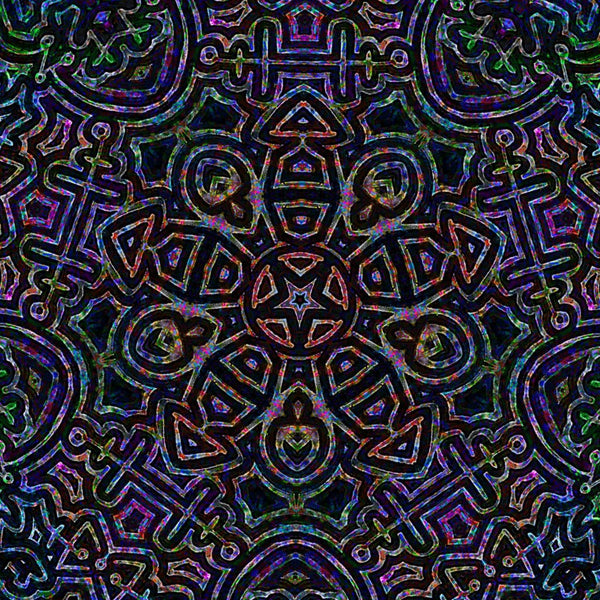Your Cart is Empty
Buy Any 4 Items, Get 15% Off Your Order!
Buy Any 4 Items, Get 15% Off Your Order!
Unlocking the Power of Tantra Vajrayana: A Guide to Tibetan Enlightenment
July 15, 2024

Tantra, a profound spiritual tradition, has guided truth-seekers for thousands of years. In Tibetan Vajrayana Buddhism, Tantra is not just a practice but a transformative path that integrates the principles of interdependence and unity among the body, mind, and spirit with the cosmos. This sacred practice aims to help practitioners realize their natural state of mind and experience reality at its deepest level.




Integrating Mind, Body, and Spirit
At the heart of Tantra lies the concept of integration. It is a practice that unites the subtlest spiritual forces within the material world with the vastness of the cosmos. Through rituals, disciplines, and the arts, practitioners merge their inner experiences with universal truths, transforming their perception of reality.
“The mind is like a mirror. It reflects everything, but it is not stained by what it reflects. In Tantra, we learn to polish this mirror, so that we see our true nature clearly.”
— Dilgo Khyentse Rinpoche
For example, Dilgo Khyentse Rinpoche, one of the great masters of Tibetan Buddhism, often spoke about how even the simplest daily activities, like preparing food, could be transformed into profound spiritual practices. By fully engaging the mind and spirit in these activities, one can connect with the universal energies and experience a deep sense of unity.

This transformation extends to key aspects of life, such as desire (kama), knowledge (jnana), subtle energy (prana), intuitive wisdom (prajna), and the understanding of the subtle body. In Tibetan Vajrayana Buddhism, these practices are exemplified by the Six Dharmas of Naropa, which guide practitioners in mastering and transforming the innate instincts and energies of the physical, mental, and spiritual body.
Overcoming Psychological Barriers through Tantric Practices
The spiritual journey is often fraught with psychological barriers such as self-doubt, external distractions, and the influence of those who do not understand the path. In Tantra, these barriers are likened to walls in a maze—obstacles that must be recognized and transcended.
“By visualizing the barriers that obstruct our path, we can begin to dissolve them. The mind creates these obstacles, and through practice, the mind can remove them.”
— Padmasambhava
The 8th-century master Padmasambhava, who is credited with bringing Buddhism to Tibet, often emphasized the power of visualization in overcoming internal obstacles. He taught that through visualizing the deities and sacred symbols of Tantra, practitioners could dissolve the mental barriers that prevented them from experiencing true spiritual freedom. One of his students, Yeshe Tsogyal, used these techniques to overcome immense personal challenges, transforming her doubts and fears into powerful spiritual insights.
Visualization is a powerful tool in this process, helping practitioners move beyond these mental obstacles. By exploring the fundamental truths acknowledged by Buddhism—such as the inevitabilities of birth, old age, disease, and death—practitioners learn to interpret their experiences beyond mere sensations. Through repeated exploration and visualization, they gradually dismantle the barriers that hinder their spiritual progress.
The Accelerated Path to Enlightenment

Tantric practices are known for their expressive and transformative nature. Unlike other spiritual paths that may emphasize dogma or tradition, Tantra focuses on the personal journey of the practitioner. Many who engage in Tantra report profound experiences of liberation, deep emotional insights, and life-changing mystical encounters.
“In the Tantra, there is no journey except the one you are on. Each moment is a step on the path to enlightenment. The more you embrace the journey, the closer you come to your true self.”
— Thubten Yeshe
Thubten Yeshe, a renowned Tibetan Lama, shared many stories of his students who experienced dramatic shifts in their spiritual lives through Tantra. One student, after years of struggling with rigid meditation practices, found freedom in the dynamic and expressive practices of Tantra. This shift led to a profound epiphany during a Tantric retreat, where she felt an overwhelming sense of liberation and connection to the universe, transforming her understanding of spiritual practice.
The physical aspects of Tantra—such as bodywork, breathwork, and energy work—are integral to this journey. These practices help practitioners connect more deeply with their bodies and use this connection as a vehicle for spiritual growth.
Understanding Tantra and Tibetan Vajrayana Buddhism
Tantra is an ancient Indian tradition that encompasses a wide range of practices aimed at achieving self-realization and spiritual liberation. Contrary to popular misconceptions, Tantra is not solely about sexuality; its primary focus is the non-dual integration of all aspects of human experience—physical, mental, and spiritual.
“The essence of Tantra is the realization of non-duality—of not two, but one. In this understanding, all things are connected, and all actions lead to the ultimate truth.”
— Buddha
The early scriptures of Tantra, dating from the 5th to 9th centuries, outline various practices, rituals, and philosophical teachings. While some of these practices involve dualistic symbolism, the essence of Tantra lies in the realization of non-duality—the understanding that all aspects of existence are interconnected.
For instance, the great Indian sage Abhinavagupta, a master of Kashmiri Shaivism, taught that all dualities—such as pleasure and pain, joy and sorrow—are different expressions of the same underlying reality. His teachings emphasized that through Tantric practice, one could transcend these apparent contradictions and realize the essential oneness of all things.

Mantras, visualization, and energy work are essential practices in Tantra. These practices are not about controlling the mind but harnessing its power to achieve spiritual liberation. The journey is not about reaching a specific destination but about embracing the process of self-discovery and transformation.
Core Techniques of Tantric Practice
Tantric practice relies on several core techniques that guide practitioners toward their spiritual goals. Visualization is a key tool, helping to set intentions and align the subconscious mind with higher states of consciousness. By repeatedly visualizing states of peace, love, and enlightenment, practitioners train their minds and bodies to act in alignment with these ideals.
“Everything happens twice—once in the mind and once in reality. By visualizing the path, we create the conditions for it to manifest.”
— Milarepa
Milarepa, one of Tibet’s most famous yogis, often spoke of how his intense visualization practices in the remote caves of Tibet allowed him to overcome his karmic burdens and attain enlightenment. His life story, filled with hardships and profound spiritual realizations, is a testament to the power of these practices in transforming the mind and spirit.
Mantras, another essential technique, are verbal affirmations that help focus the mind and induce a meditative state. The rhythmic repetition of mantras resonates with the divine, calming thoughts and strengthening concentration.
Rituals play a crucial role in Tantra, providing a structured practice that instills discipline and a sense of sacredness. Whether through regular personal rituals or community-based practices, rituals help secure a connection to the divine and reinforce spiritual commitments.
The Role of Art in Tantra

Art is a powerful expression of spiritual ideals in Tantra. Tantric art, deeply rooted in Indian traditions, often depicts the harmonious balance of dualities—such as the masculine and feminine energies symbolized by Shiva and Shakti. These works of art are not merely decorative; they are profound representations of the spiritual principles of Tantra.
“Art in Tantra is not simply for adornment. It is a tool for awakening, a mirror reflecting the deepest truths of our existence.”
— Lama Zopa Rinpoche
In the 15th century, the Tibetan artist and monk, Menla Döndrup, became famous for his exquisite thangka paintings, which were not just visual representations but meditative tools designed to guide practitioners into deep states of contemplation. His works, celebrated for their detail and spiritual power, were used by generations of monks as aids in their meditative practices, helping them to visualize the deities and sacred landscapes of Tantra.
Sexual imagery in Tantric art, often misunderstood as mere pornography, actually symbolizes the merging of dualities and the realization of non-dual awareness. Through these symbolic depictions, Tantra challenges societal norms and offers a new perspective on life, where there is no separation between the sacred and the mundane.
The practice of Tantra is ultimately about awakening to the full realization of one’s body and spirit. By engaging in techniques like meditation, breathwork, and ritual, practitioners aim to awaken the dormant energies within themselves, leading to a state of unity with the universe.
“In each of us lies the seed of enlightenment. Through Tantra, we cultivate this seed, nurturing it until it blossoms into full awareness.”
— Chögyam Trungpa Rinpoche
In Tantra, the journey is everything, and the ultimate goal is to awaken the teacher within. As you walk the path of Tantra, remember that the true teacher is within you—guiding you toward enlightenment and the realization of your true nature.
Leave a comment
Comments will be approved before showing up.
Also in Sacred Surreal Blog
newsletter signup
Be the first to know about upcoming sales and promos. Get a 10% discount coupon when you subscribe!
Subscribe
Sign up to get the latest on sales, new releases and more …

Storewide Sale!
Buy any 4 items and get 15% off your total order! For a limited time only.



